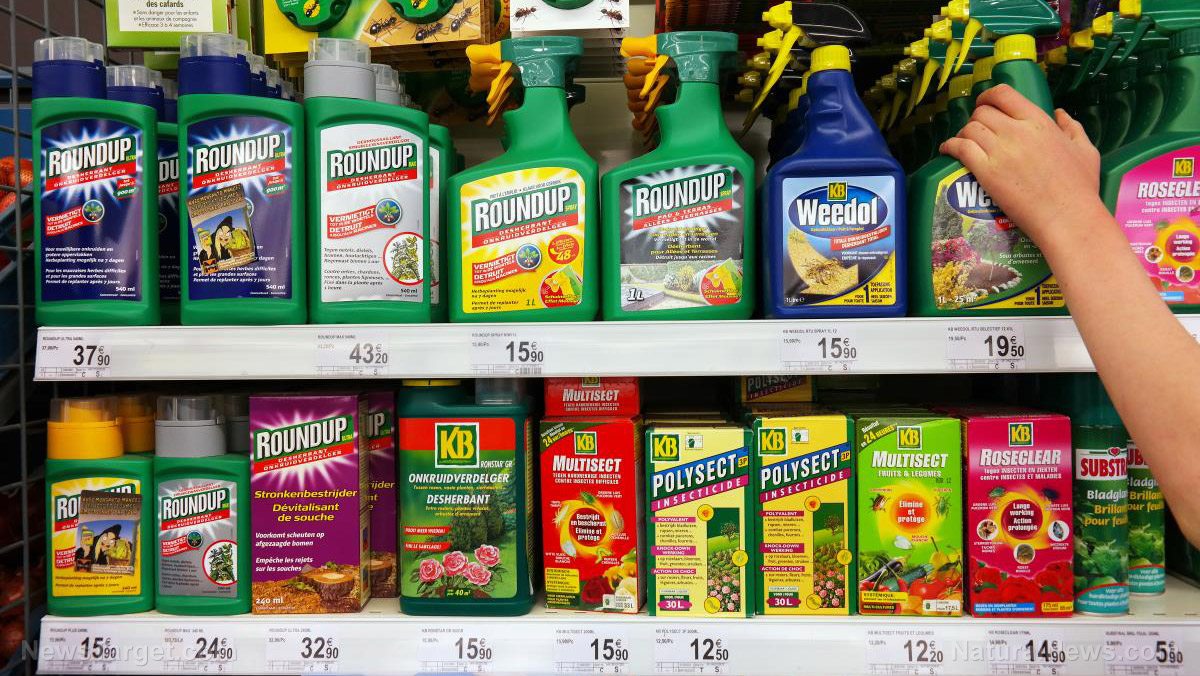Researchers link glyphosate-based weedkillers to liver disease and endocrine disorders in kids
03/06/2023 / By News Editors

Children exposed to glyphosate-containing weedkillers, used in farming and on school playgrounds, appear to be at increased risk for liver inflammation and metabolic disorders in young adulthood and more serious diseases later in life, according to a study published Wednesday in the journal Environmental Health Perspectives.
(Article by Carey Gillam republished from TheNewLede.org)
Children exposed to a weedkiller commonly used in farming, as well as on residential yards and school playgrounds, appear to be at increased risk for liver inflammation and metabolic disorders in young adulthood and more serious diseases later in life, according to a study published Wednesday in the journal Environmental Health Perspectives.
The paper was authored by 12 California scientists and health researchers — most from the University of California, Berkeley School of Public Health — and is the latest of many studies linking glyphosate herbicide to human health problems.
Glyphosate is better known as the active ingredient in Monsanto’s Roundup products as well as scores of other weedkilling brands sold around the world.
The chemical is considered the most widely used herbicide in history, and residues are commonly present in food and water, as well as in human urine. The chemical is so pervasive that government researchers have documented it in rainfall.
Monsanto and Bayer AG, which bought Monsanto in 2018, maintain that Roundup and other glyphosate-based herbicides are safe when used as directed, and say the weight of scientific evidence demonstrates that safety.
But more than 100,000 people in the U.S. have alleged exposure to the weedkiller caused them to develop non-Hodgkin lymphoma. Many independent scientific studies have linked glyphosate to cancers as well as liver disease, endocrine disruption and other health problems.
In the new study, researchers tracked 480 “mother-and-child duos” who live in the Salinas Valley of California, a key agricultural area, analyzing levels of glyphosate weed killer used in the area and levels of the weedkiller present in the urine of the mothers while they were pregnant and in the children as they grew.
They also took into account levels of a degradation product of glyphosate known as Aminomethylphosphonic acid, or AMPA, in the urine of the study subjects. The researchers then assessed the liver and metabolic health of the children at the age of 18.
They concluded that higher levels of glyphosate residue and AMPA in urine in childhood and adolescence were associated with higher risk of liver inflammation and metabolic disorders in young adulthood.
In addition, they found that agricultural use of glyphosate near participants’ homes from birth and up through age five was associated with metabolic disorders at age 18.
Metabolic disorders in youth can lead to heart disease, stroke, type 2 diabetes and liver disease later in life.
The children could have been exposed to glyphosate through a variety of routes, including their proximity to areas where glyphosate is used and also through consumption of cereal, snacks and other foods that commonly contain glyphosate residues.
“There really is a paucity of data about what we know about glyphosate in children and young adults,” said Brenda Eskenazi, director of the UC Berkeley School of Public Health’s Center for Environmental Research and Community Health (CERCH).
“We really need to figure out what’s going on here and how the most vulnerable populations may be affected. Until we have more research, the precautionary principle would say we shouldn’t be using it unnecessarily.”
An “alarming” rise in health problems
The California study notes that the prevalence of childhood obesity and metabolic syndrome has increased “at an alarming rate” in the U.S., particularly among populations of color.
And while diet and physical activity may be factors, “some hypothesize that exposure to synthetic chemicals may also be involved,” the study states. The authors also noted that glyphosate use in the U.S. has similarly risen markedly in the last few decades.
“Although previous research on glyphosate in humans has largely focused on its potential carcinogenicity, this study indicates the need for further investigation of its association with metabolic and liver outcomes,” the study concludes.
Funding for the work was provided, in part, by the National Institutes of Health and the National Institutes of Environmental Health Sciences.
The study utilized biological samples collected by the Center for the Health Assessment of Mothers and Children of Salinas (CHAMACOS), a longitudinal birth cohort investigation on the health effects of pesticides and other environmental exposures among children in a farmworker community.
CHAMACOS researchers provided more than 20 years of exposure data and health records along with the urine samples.
The findings are particularly troubling because the levels of glyphosate measured in the urine of study subjects is within the range reported separately for the general U.S. population, according to Ana Maria Mora, a co-author of the study and a CERCH investigator.
Last year, a unit of the Centers for Disease Control and Prevention (CDC) reported that more than 80% of urine samples drawn from children and adults in a U.S. health study contained detectable traces of glyphosate.
Years of debate
Close to 300 million pounds of glyphosate are used annually by U.S. farmers on their fields. The weedkiller is routinely sprayed directly over growing genetically engineered crops such as corn and soybeans, and also over non-genetically engineered crops such as wheat and oats as a desiccant to dry crops out prior to harvest.
Many farmers also use it before the growing season, including spinach growers and almond producers.
The safety of glyphosate has been subject to international scientific and regulatory debate for years. In 2015, the International Agency for Research on Cancer classified glyphosate as a probable human carcinogen.
Many regulators, including the U.S. Environmental Protection Agency (EPA), consider glyphosate as not likely to be carcinogenic, but critics say regulatory reviews are deeply flawed and highly influenced by the chemical industry.
Last year, a U.S. federal appeals court vacated the EPA’s safety finding, saying the agency ignored important studies and ordering the EPA to give further consideration to evidence of glyphosate risks.
Many countries have sought to ban glyphosate, but threats of trade sanctions and other industry pushback have thwarted those efforts in countries such as Thailand.
The U.S. has been pressuring Mexico to drop plans to ban glyphosate but Mexican leaders say they are phasing out glyphosate by March 2024.
Read more at: TheNewLede.org
Submit a correction >>
Tagged Under:
agrichemicals, chemicals, children's health, deception, disease causes, endocrine disorders, environment, food supply, glyphosate, glyphosate herbicide, liver disease, Monsato's Roundup, research, toxins
This article may contain statements that reflect the opinion of the author
RECENT NEWS & ARTICLES
COPYRIGHT © 2017 MONSANTO NEWS




















